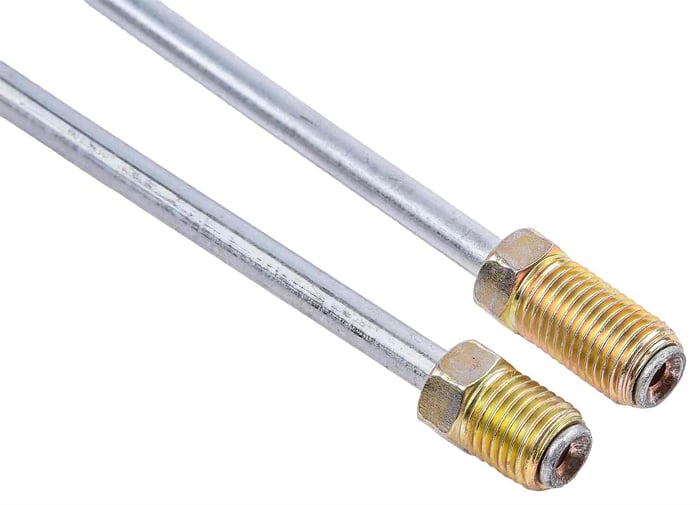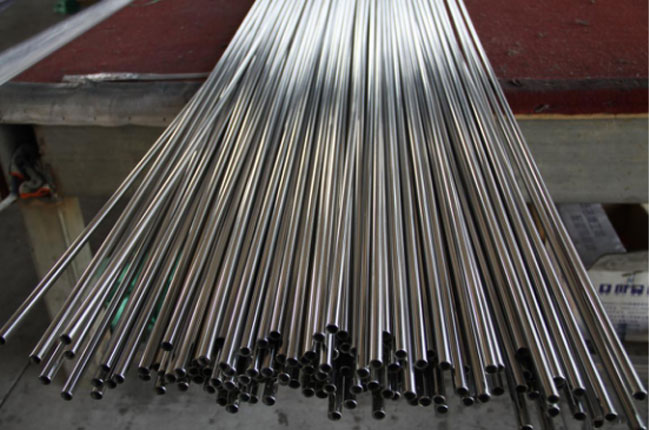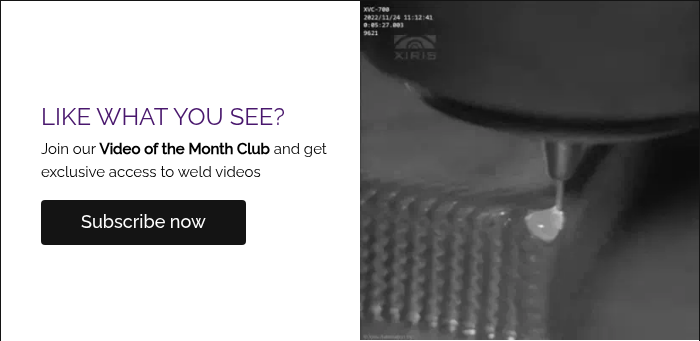Tube fabricators are constantly faced with a myriad of business pressures to deliver a quality product at the best price often with tight delivery schedules from their customers.
Some of these end customers face their own pressures as the use of the tubes in their products expose them to potential liability issues.
No where are these pressures as acute as in the automotive industry, where high paced production schedules, changing deliveries and onerous cost and quality demands make for a challenging environment into which fabricators sell their products.
Quality inspection systems such as the Xiris WI3000 laser in-line weld inspection system is an essential tool for the most demanding automotive tube product to see defects that are not.
Brake Lines
Automotive brake lines have evolved over the years from a double layer brazed tube to a single layer welded tube.
The change has been made largely to the high quality of the longitudinal welding process as well as advanced quality control tools such as the Xiris WI3000 laser in-line inspection system.
Adding an inspection system when fabricating this type of tube is essential for fabricators because of the safety, durability and regulatory compliance demands of the industry.
In the field, brake lines carry pressurized brake fluid, which is responsible for transmitting hydraulic force to the brake calipers or wheel cylinders.
Any weakness or failure in the welds could result in a loss of brake fluid, leading to brake failure, potentially creating a liability for the tube maker and their customer.
Given these factors, the welds on steel automotive brake lines are crucial for the reliable and safe operation of the braking system. Ensuring proper forming and weld processes are essential to ensure the integrity and longevity of the welds in the field.
 |
Fuel Lines
Automotive fuel lines are designed to carry flammable liquid fuel under pressure from the fuel tank to the engine.
Any weakness or failure in the welds can result in fuel leakage, which poses a significant safety hazard in the field.
An additional challenge with fuel lines is how they are designed into the car’s fuel delivery system. Sometimes, one fuel line is connected to another fuel line that uses clamps and a perforation to provide a secondary flow path.
The challenge there is for the clamp to work perfectly, it has to have a perfect seal around the tube. Any small scratch or surface defect could create a pathway for the fuel to leak out of the clamp, potentially causing failures in the field.
The solution is to use an advanced quality control tool such as the Xiris WI3000 to inspect the tube at the point of welding to detect any surface defects that are larger than an acceptable tolerance. Defects such as a sunken or raised weld, weld undercut or mismatch could all create an unwanted pathway for liquid to flow.
A secondary inspection of the entire surface of the completed fuel line can also be done with the Xiris WI3000 for the same reasons, to look for significant scratches anywhere on the outside of the tube, not just the area around the weld, as any clamps using on the tubing could have a leak at any point on the surface.
Considering the safety risks, performance implications, regulatory requirements, and material compatibility, inspecting the welds on steel automotive fuel lines are crucial, as is the inspection of the complete surface in some cases, for the reliable and safe operation of the fuel system.
Implementing a laser in-line inspection system on the tube mill can help to deliver the rigorous quality control measures that are essential to maintain the integrity and longevity of the fuel lines in the field.

Small Diameter Stainless Steel Fuel Line Tubing
Courtesy Jaway Steel
|
Exhaust Tubes
Modern automotive exhaust tubes are most often made of thin-walled tubing where any small variation due to mismatched strip edges when forming, or oversized weld beads can be a big problem in the field.
As part of a finishing process of the thin-walled tubes, fabricators often grind down the area around the weld bead to produce a smooth round finish.
However, if the tube has a slight mismatch to it during the welding process, the grinding process could remove some of the parent material, reducing the wall thickness near the weld bead. The result is a tube that has diminished specifications because of a thinner wall segment that could be a potential failure point.
Some fabricators may forgo the process of grinding the weld bead altogether, using instead a weld process that generates a small weld bead. Nevertheless, the tube could still be subject to mismatch of the strip edges during welding that could cause an out of round or larger diameter tube segment.
With some exhaust tube designs include the precision assembly of two or more tubes together, a slightly out of dimension tube may not fit the assembly process and be rendered scrap. This can be a disaster for the fabricator as entire shipments have to be returned, inspected and possibly reworked.
Thus the need for an inspection system such as the WI3000 laser in-line inspection system that can precisely measure out of round forming and mismatch between strip edges down to about 0.010 mm (0.0004”).
 Typical Steel Exhaust Pipes and Assemblies. Typical Steel Exhaust Pipes and Assemblies. Courtesy Walker Exhaust |
Summary
Considering the safety risks, performance implications, regulatory requirements, and harsh operating conditions, the welds on automotive brake lines, fuel lines and exhaust tubing are critical for the proper functioning of these tubes in use in the field.
Employing a weld inspection system that can see forming issues and welding defects as soon as they happen so as to alert operators prior to more value being added downstream in a tube mill is an absolutely critical component of an advanced quality and process control measure needed to ensure the integrity and durability of the welds in automotive tubing.
To learn more about how you can implement Xiris inspection systems, reach out to our product experts.
Stay up to date by following us on social media or subscribe to our blog!




.png)


